More Information in this section
- Up
- What is the International Organization for Standardization (ISO)?
- What is ISO 9000 and its benefits?
- Our Approach: Focus and Guarantee
- Our Approach: Step-by-Step Implementation
- ISO 14000
- control-ES and ISO Management Systems
What does control-ES really look like?
MyPage -- the individual’s first view through the web-portal. Ensuring ease-of-use and personal adoption, “favorites” are saved linking to frequently used processes, documents, and measures. “To Do” collaborative actions and personalized performance measures ensure that process performance is realtime and living.
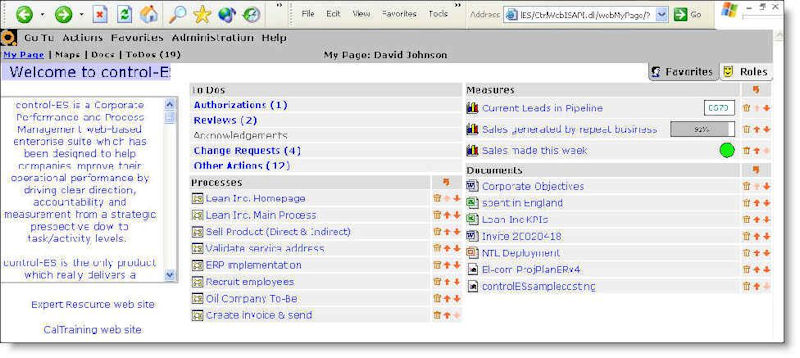
Process Mapping, Control and Collaboration -- every diagram is controlled though access rights, version control and through collaboration features such as memos, actions, & change requests. Process ownership and authorization are decentralized. Documents, applications (e.g. ERP, CRM), Help Files and E-Learning can be linked to their activities. Each activity can “drill down” to lower level diagram detail.
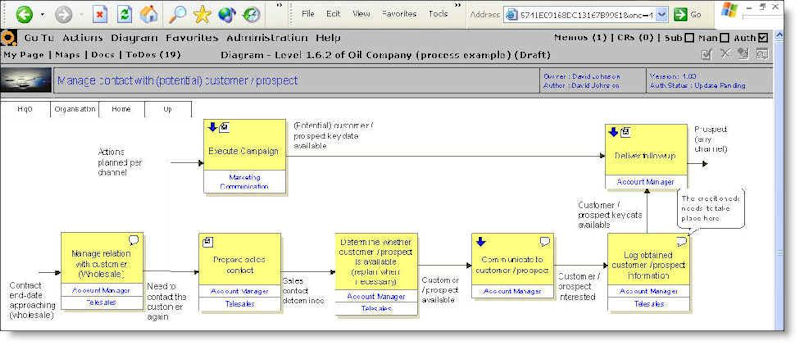
Measurements and Scorecards – combines realtime metrics and drives accountability for process and personal performance. Metrics can be personalized and balanced at any process level. Email and wireless device notices are automated when pre-set thresholds are passed.
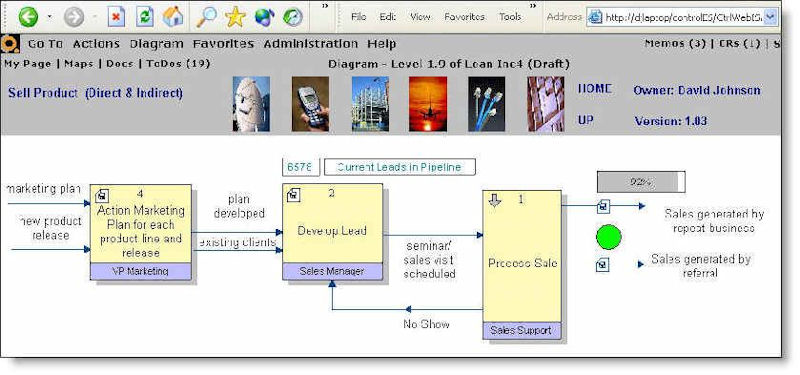
Activity Based Costing – a powerful function that gives end-users the ability to model different cost, volume and resource allocations. “What If” analysis generates multiple scenarios so that different options can be compared. Costs from lower-level processes may be rolled-up to generate costs for entire process maps. Costs, volumes and Full-Time-Equivalencies (FTE) are calculated realtime as diagram scenarios change.
Create multiple Activity Based Costing (ABC) scenarios. 18 values include resource costs, probabilities, volumes, duration, FTE, early and late start, early and late finish, float, delay, completion status, feedback factor, custom volume cost, start date, start time, and volume cost.
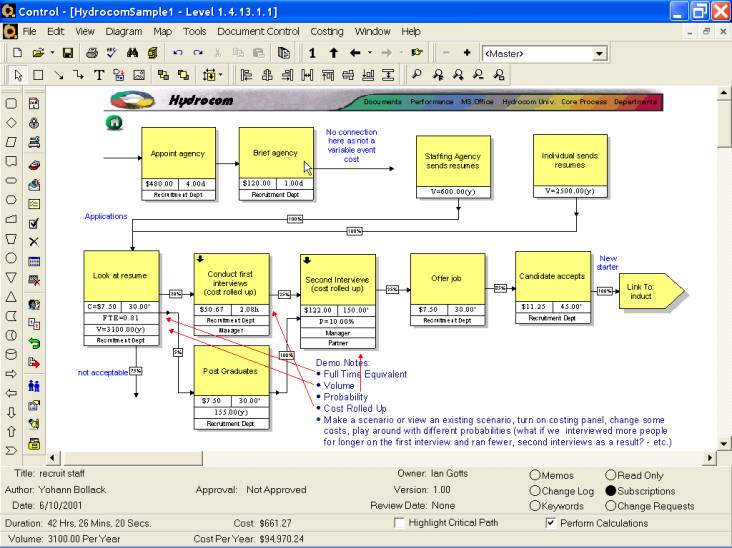
Storyboards – simplify training of processes. Record and display detailed information for each step of a process flow. New Employee Training and Application Training (e.g. ERP, CRM) have never been easier.
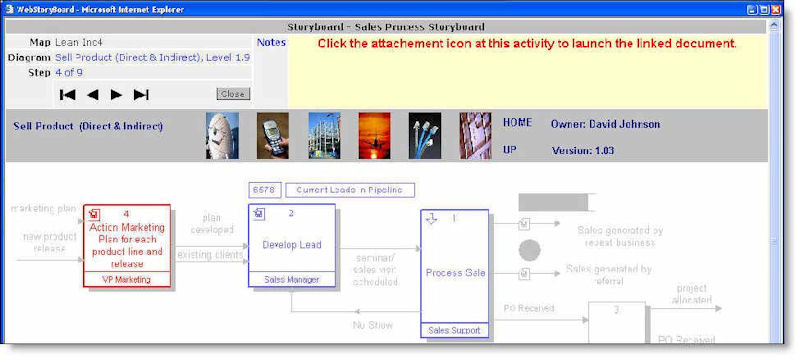
control-ES Data Tables: Capture and Report Requirements
Board Level Executives collaborate to create one top-level process diagram of the core business flow. From that point, Business Managers drill-down from those activities to process map their process flow. These Business Users capture all activities, whether automateable (ERP activities), customer-facing (CRM activities) or neither.
Once an activity is identified that should link to an ERP or CRM system, a control-ES Data Table can be attached to that activity. control-ES Data Tables are customizable to capture any data requirements that you organization feel are important. Once captured, reports can be created with real-time data to sort in any manner. This process makes requirements data capturing and reporting accurate, up-to-date and complete.
control-ES clients are implementing ERP and CRM systems under budget and in less time. Premier consulting companies such as Accenture and IBM Global Systems are using control-ES to better their implementation projects for clients of all sizes.
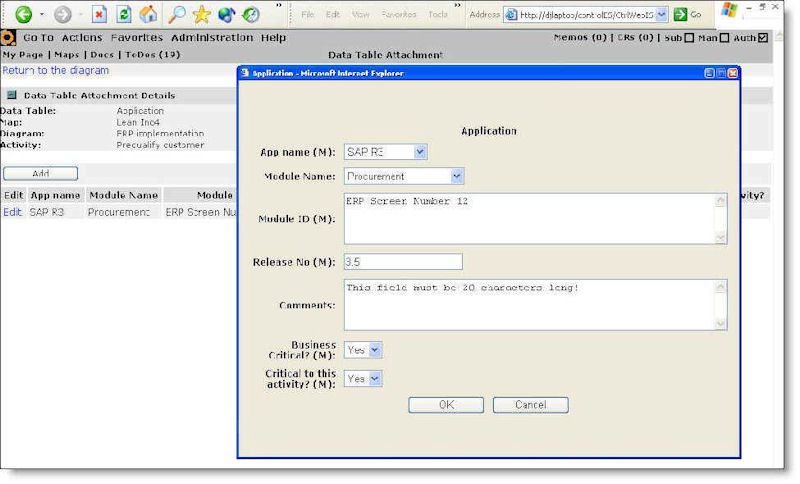
Business Controls and Reporting – compliance and customized reporting. Data can be exported to MS Excel or XML.
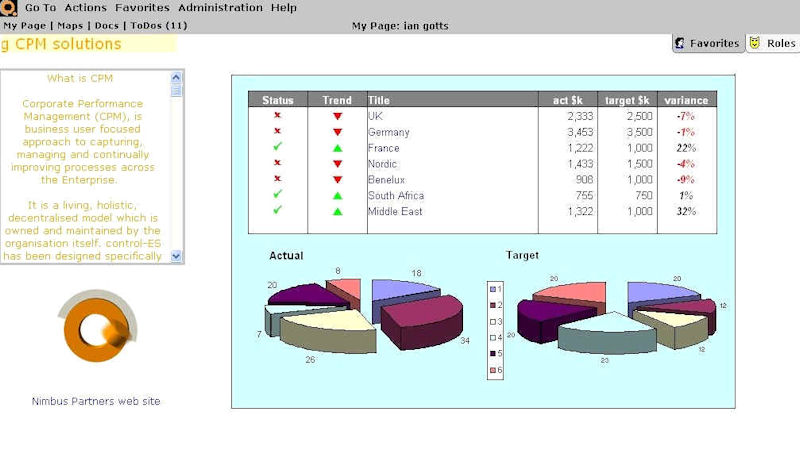
Authoring Interface -- Each process diagram has automated document control and collaboration features including:
| - Access Rights - Print Rights - Masters and Archives - Draft Copies - Change Log - Title, Author, Version, Release Date,Review Date, Keywords, etc. - Change Requests - Subscriber Change Notices |
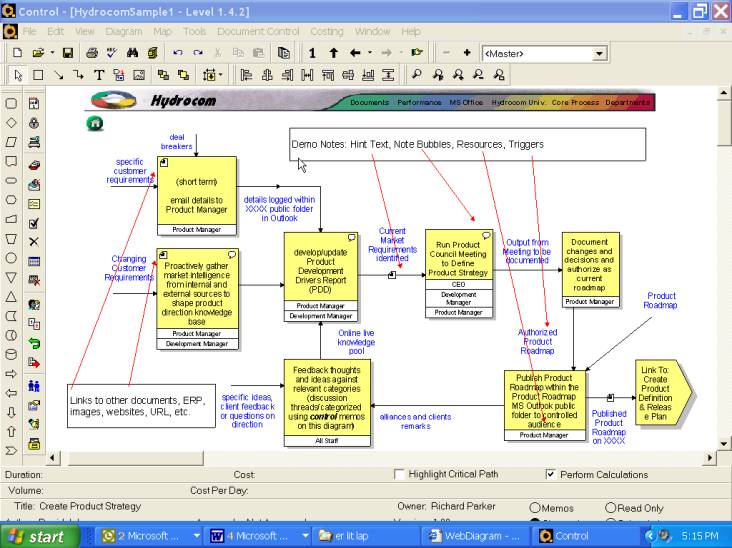
Document Registry
control-ES offers a document registry to post all of your important files that need to go under document control. These can be any MS Windows-based documents such as Word, Excel, CAD, Shortcuts, PowerPoint, etc. These documents can be filtered or sorted by any category such as department, document type, ISO 9000 related, division, approved, author, title, etc.
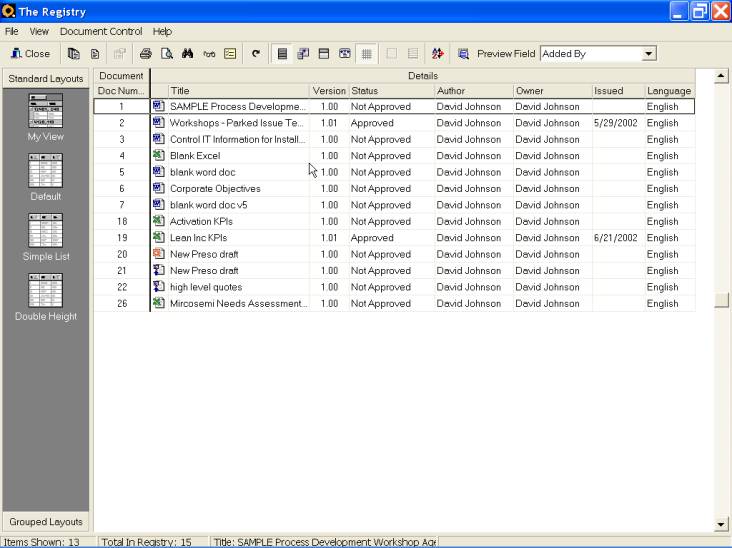
Each document (file) in the Document Registry can be place under document revision control. The Document Registry’s document control includes:
| - Access Rights - Encryption - Masters and Archives - Draft Copies - Change Log - Title, Author, Version, Release Date,Review Date, Keywords, etc. - Change Requests - Subscriber Change Notices |
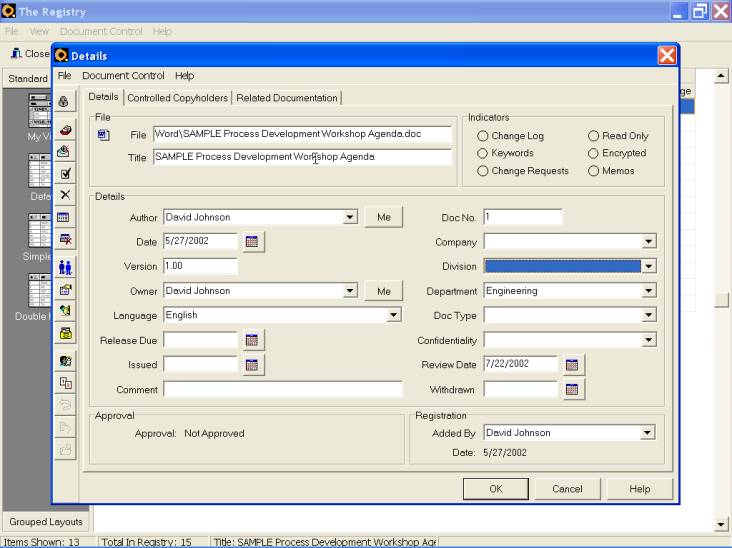
Samples of screenshots and more information
-
control-ES Screen Shots
